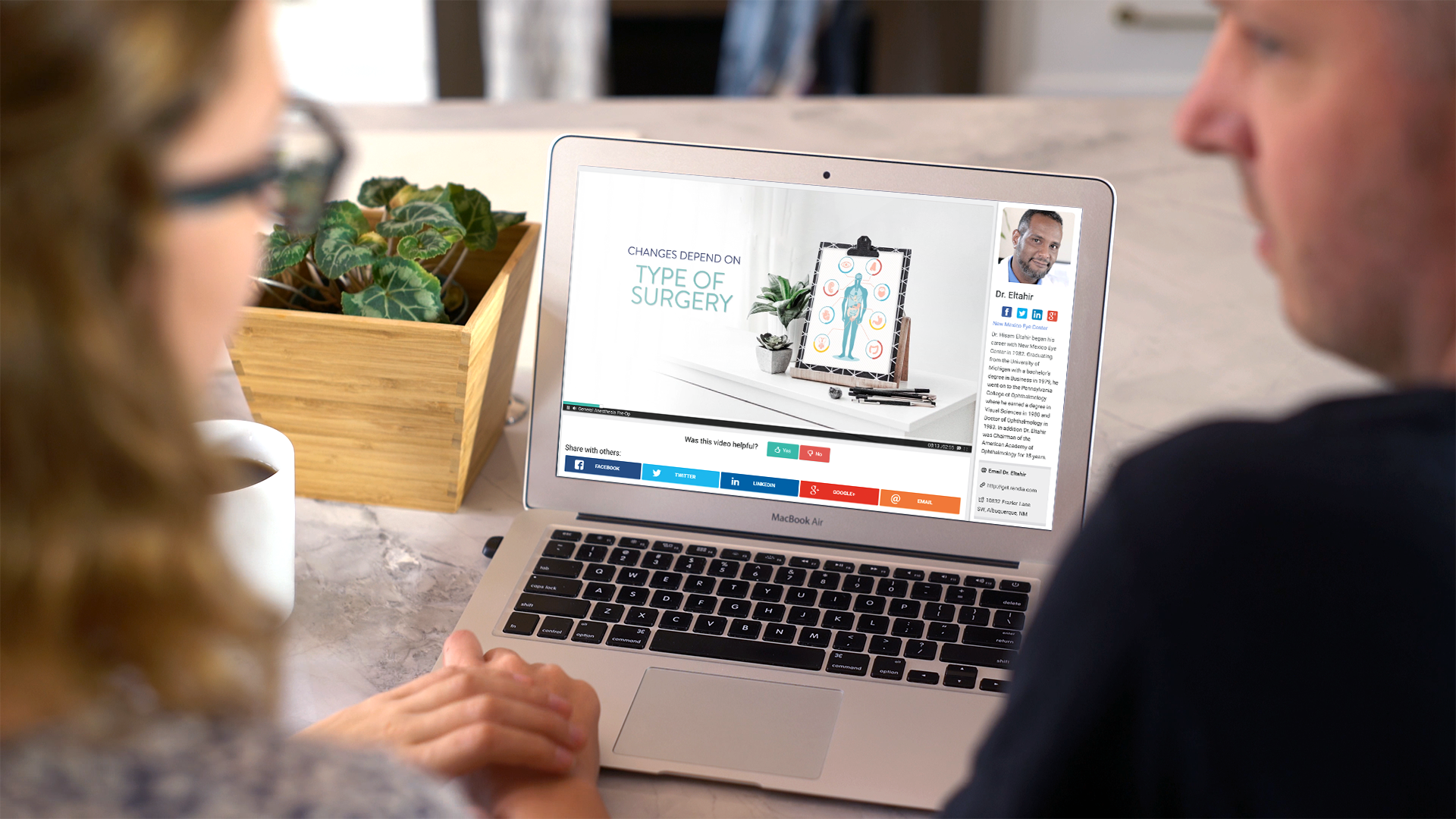Are you customizing patient education in your practice?
The data-driven healthcare landscape has created the demand for personalized, patient-centric care. In fact, a recent survey found that 72 percent of patients said they want more personalized care that is specifically tailored to their individual clinical needs — and most believe that technology is the answer.
Doctors can make diagnoses more accurately, and prescribe treatment plans more effectively, by using the latest medical tech on the market. But that’s just one piece of the puzzle. How can doctors use technology to personalize not just the patient’s care, but also the patient’s experience of the care? Here are some ways to give your patients what they want.
Overcoming time constraints with technology
For doctors, not getting to spend enough time with their patients “hampers their ability to deliver that holistic patient care journey most experts believe can improve quality,” reported PatientEngagementHIT.com. “Specifically, 55 percent of providers said time constraints keep them from delivering a personalized patient experience.”
More than half of doctors say time constraints prevent them from delivering a personalized patient experience. Technology can help.
When used effectively at different points during the patient journey, technology can help save time and enhance the quality of the limited face-to-face time doctors have with patients. For example, emailing patients educational videos before they come into your office can help them feel prepared and confident going into their appointments, give them a baseline understanding of their condition, answer common questions and lead to more informed discussions in the exam room.
Reaching out by email engages and educates patients before they’ve even stepped through your door. This strategy helps welcome new patients to your practice and builds your relationship with existing patients by showing them you’re a trusted source of health information.
Show patients customized potential outcomes
Digital tools that you can use to visually illustrate disease conditions or treatment outcomes can be invaluable — even more so when they are customized to individual patients. For example, with Rendia’s Outcome Simulator, the most advanced vision simulator on the market, you can personalize what each patient sees by demonstrating their current visual acuity along with different simulated outcomes, so that patients can get a true picture of their vision, before and after treatment. Plus, settings aren’t fixed — you can emphasize residual astigmatism or nighttime halos, for example, to show the full range of possibilities.

It’s difficult to communicate a visual experience with words. That’s why Rendia’s Outcome Simulator was developed.
“It’s difficult to communicate a visual experience with words,” noted EyeNet magazine. A patient may not have the language to explain glare or halos, or be able to visualize what a doctor means when they use those terms. Showing a simulation of these potential side effects is a much more effective strategy.
In addition, Outcome Simulator lets you show patients relatable and realistic scenes so they can picture themselves in certain settings. Is your patient an office worker who spends a lot of time at a computer? Show them high-quality images of an office environment. Does your patient do a lot of reading? Adjust their view to a reading scene, so that they can easily see what their vision could look like pursuing their hobby.

Other elements of personalized patient care
Of course, personalized care goes beyond technology. It doesn’t entirely depend on how much time you have with patients – it can be as simple as calling patients by name. A recent survey found that 44 percent of healthcare consumers said they wanted email, voicemail and text communications from their doctors to be personalized with their name.
In a survey, 44% of patients said they’d like all communication from their doctor to be personalized with their name.
Other ways to personalize the patient experience include making communications relevant to them, sending educational information specific to their needs and sending them reminders about their particular condition. (“Hi, Susan! Time to schedule your follow-up eye exam.”)
A customer experience expert told Forbes: “The quickest way to ruin a customer experience in healthcare is to treat everyone the same.” And although it can sound daunting, with the right tools you’ll be able to give patients a personalized experience while staying efficient.
For more tips, read our post 3 Things Doctors Can Do to Improve Patient Communication.

